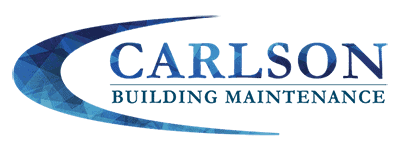
The world’s been fighting a battle against a devastating illness, and a traditional cleaning protocol isn’t enough to kill germs. Follow the cleaning, sanitizing, disinfecting standards created by the Center for Disease Control and Prevention to keep spaces clean and healthy.
Commercial Cleaning Is Vital to Our Health and Safety
Since news broke of COVID-19, many households and businesses amplified their cleaning efforts. Using detergents and other cleaning agents to keep the building clean, especially large facilities open to the public, has been a learning experience.
In the new year, it’s best to invest in commercial cleaning services for your facility, if you haven’t already. It’s in your associates’ and visitors’ best interest that professionals perform a thorough cleaning job throughout the building consistently.
How Are Cleaning, Disinfecting, and Sanitizing Different?
Although people often use the terms interchangeably, cleaning, disinfecting, and sanitizing are not the same things—they each have their own respective purposes.
Cleaning
Scrubbing, washing, and rinsing to remove dust and dirt from surfaces classifies as cleaning. But keep in mind, cleaning doesn’t necessarily kill germs. Although cleaning is vital to your regular protocol, it’s just the first of several steps to eliminate microbes and impurities.
Disinfecting
Your cleaning crew must also implement disinfectant services. Disinfection refers to using solutions to kill germs and viruses on contact, and it lowers the risk of spreading disease by touch. Disinfectants are usually bleach or alcohol solutions. These products are certified by the Environmental Protection Agency (EPA) to eliminate viruses on nonporous or hard surfaces.
Sanitizing
According to the EPA, proper sanitization reduces the number of germs, but it doesn’t kill viruses. Sanitizing can be done by either cleaning, disinfecting, or both. Each industry, such as schools, restaurants, and hospitals, have their own “safe” levels of germs. Sanitization helps to keep them within these parameters.
Leave all your cleaning to the Carlson crew!
Stick to a Routine
Routine cleaning is necessary no matter what industry you’re in, and the CDC recommends cleaning at least once a day. Some areas and surfaces indeed require more frequent cleaning, disinfection, and sanitization than others. However, a regular cleaning routine eradicates germs before they can spread any further. Microbes multiply, getting out of control the more they accumulate. When day porters diligently clean and disinfect your facility on a daily or weekly basis, germs and viruses have little time to fester.
Implement High-Touch Point Cleaning
High-touch point cleaning is a sanitization method that mitigates the spread of germs and bacteria throughout your building, making it vital to every business. The places and surfaces that have frequent contact with countless people all day require extra attention. High-touch points include but are not limited to:
- Light switches
- Entry and exit touch points
- Toilets
- Sinks and faucets
- Registers
- Phones
When business is booming, especially around the holiday season, you don’t have time to disinfect every high-touch surface in your building. However, it’s still important to hire professionals to follow commercial cleaning guidelines. By implementing these services, you show awareness and consideration of the global health crisis. Thorough cleaning lets associates and customers know you’re doing your part to keep everyone safe.
Carlson Building Maintenance Meets the CDC’s Cleaning and Disinfection Standards
It’s not too late to invest in a commercial cleaning plan that’s suitable for your business, so double down on cleaning and disinfecting measures to protect yourself and others.
Our qualified crew follows the CDC’s commercial cleaning guidelines. We perform all services, including general cleaning, minor maintenance, and trash removal, to name a few. Carlson leaves no stone unturned. We also offer carpet care and hard floor cleaning solutions, as well. Call Carlson today for a free consultation.


